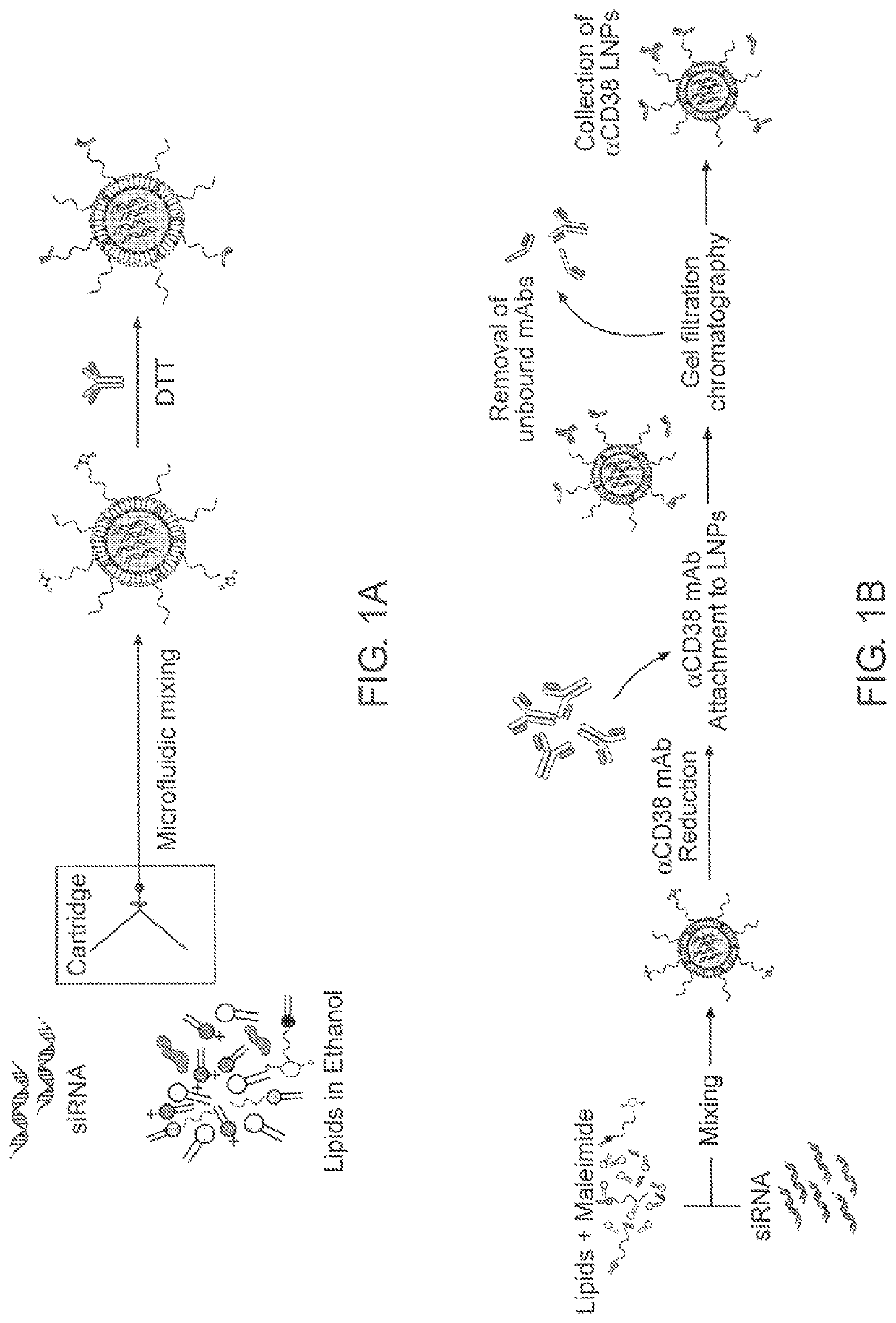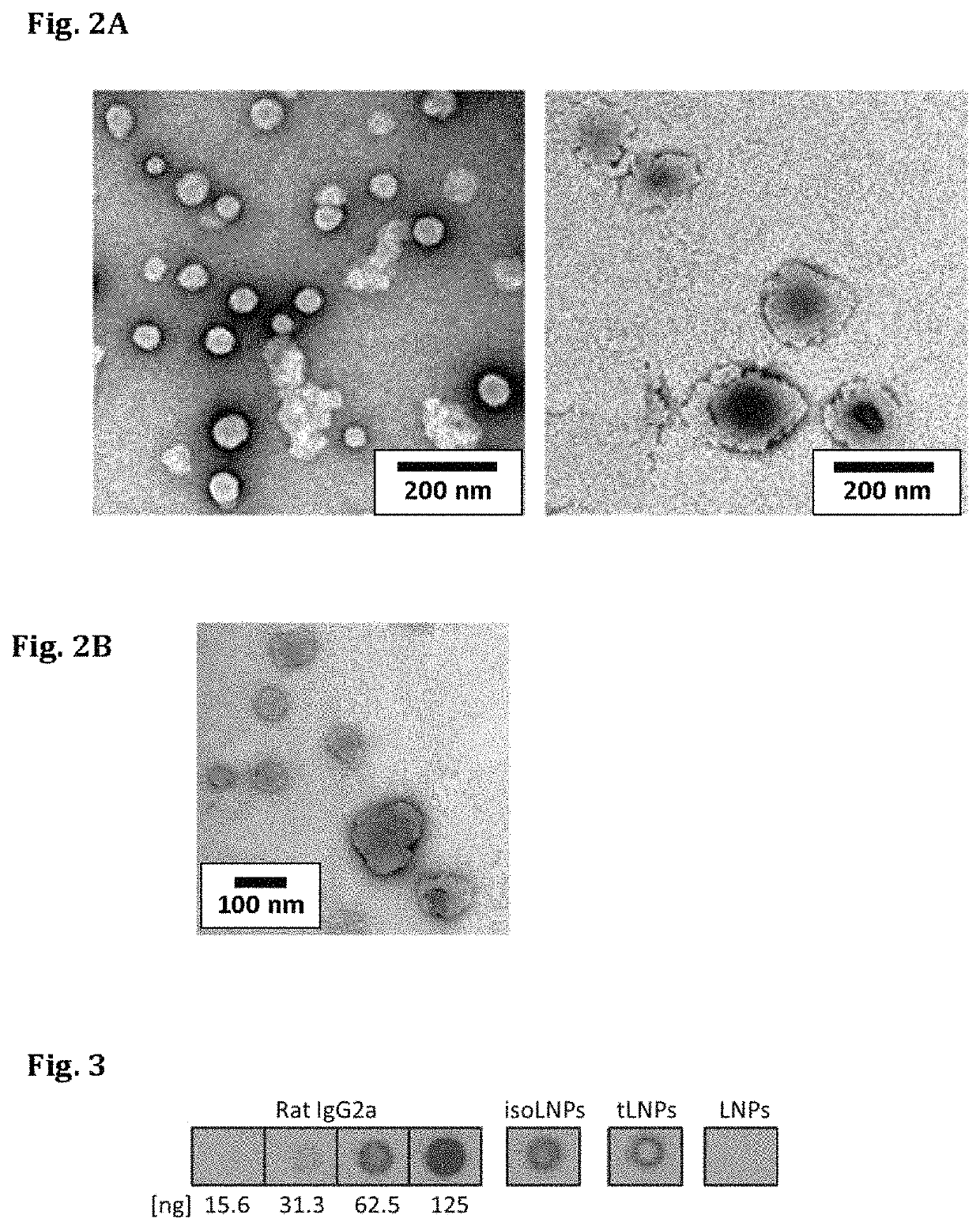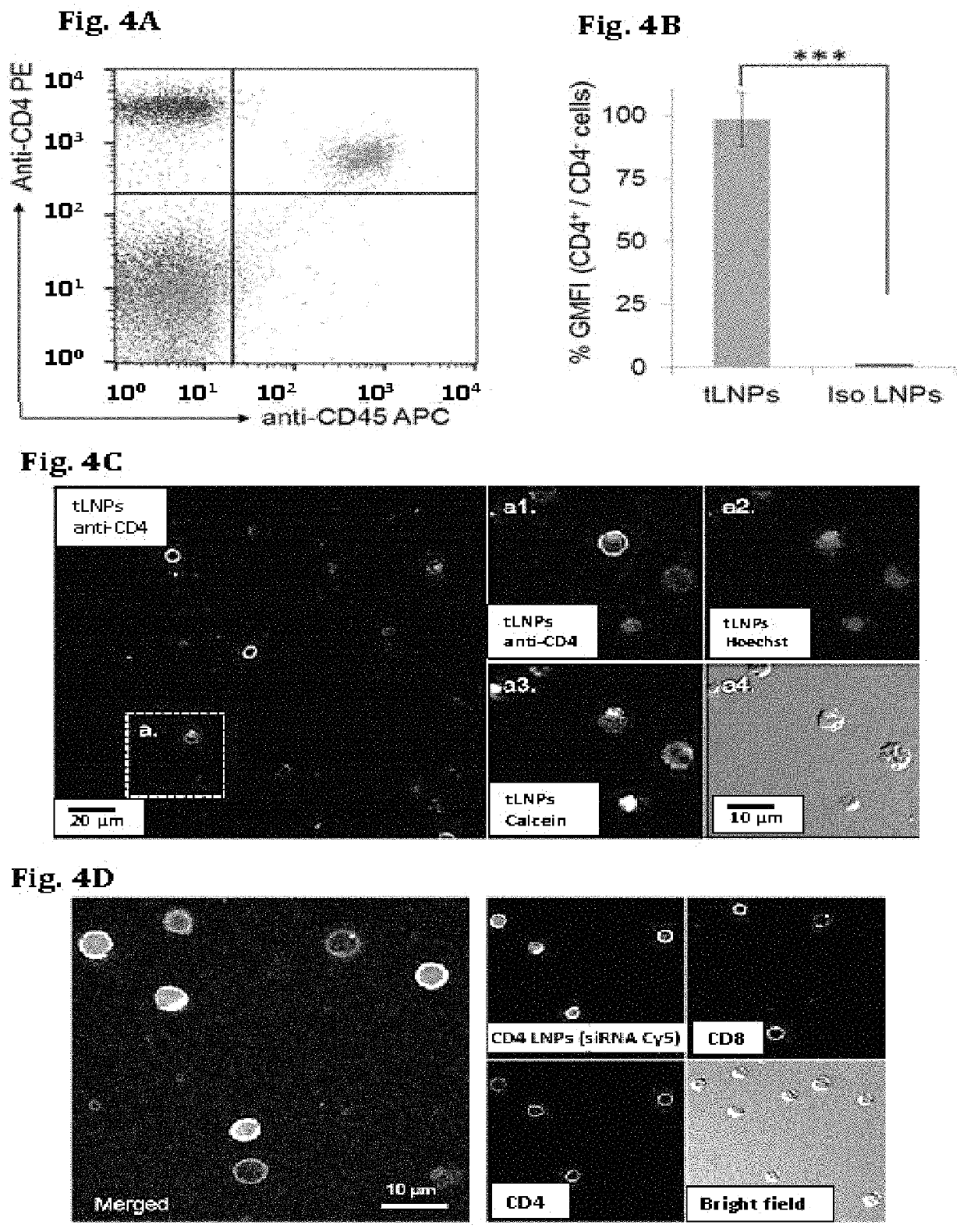Targeted lipid particles for systemic delivery of nucleic acid molecules to leukocytes
a nucleic acid and targeted technology, applied in the direction of gene therapy, antibody ingredients, pharmaceutical non-active ingredients, etc., can solve the problems of constitutive over-expression of cycd1, short median survival, and most of these delivery approaches have not been optimized, so as to improve the stability and efficacy of sirna delivery, increase the efficacy of nucleic acid molecules, and improve the effect of sirna delivery stability
- Summary
- Abstract
- Description
- Claims
- Application Information
AI Technical Summary
Benefits of technology
Problems solved by technology
Method used
Image
Examples
example 1
on and Characterization of Targeted-Lipid Nanoparticles (tLNPs), Targeted to T-Cells
[0206]To prepare the effective siRNA delivery system for T cells, which include siRNA-encapsulated LNPs a microfluidic mixer system (Nanoassemblr) was used. The particles were prepared as detailed above. The mixing of acidified siRNAs (pH 4) with a mixture of lipids (cholesterol, DSPC, PEG-DMG, Dlin-MC3-DMA and DSPE-PEG-maleimide; illustrated in FIG. 1), resulted in the production of highly uniform-sized nanoparticles (NPs) that had a mean diameter of ˜58 nm measured by dynamic light scattering (DLS). Since the pKa of Dlin-MC3-DMA lipid is 6.44, it is expected to provide a minimal or neutral charge at physiological pH (7.4) and indeed the zeta potential of the LNPs was shown to be about −9 mV (Table 1). The particles hydrodynamic diameter was also confirmed using transmission electron microscopy (TEM), as shown in FIG. 2 (left hand panel). To construct T-cells targeted LNPs (tLNPs), DTT reduced monoc...
example 2
on and Characterization of Targeted-Lipid Nanoparticles (tLNPs), Targeted to B-Cells (MCL Cells)
[0209]Lipid-nanoparticles (LNPs) encapsulating siRNAs using a microfluidic mixing system as described were constructed (FIG. 1B). The lipid mixture included the lipid Dlin-MC3-DMA (50 mol %), cholesterol (38%), DSPC (10%), DMG-PEG (1.95%) and DSPE-PEG-Maleimide (0.05%). αCD38 mAb (clone THB-7) was reduced to allow its chemical conjugation to maleimide groups present in the LNPs and then incubated with the LNPs. The αCD38-LNPs-siRNA had a mean diameter of ˜116 nm with a narrow size distribution (PDI˜0.157) as measured by dynamic light scattering (DLS, Table 2). ζ-potential measurements showed a slight negative surface charge, as expected, at physiological pH (21). Transmission electron microscopy (TEM) analysis of the LNPs indicated a globular shape and size distribution in accordance with the DLS measurements (FIG. 2B).
[0210]
TABLE 2Characterization of αCD38-LNPs-siRNA by dynamic lightscat...
example 6
Internalized by Distinct CD4 Subset Followed by Functional Silencing
[0219]After establishing tLNPs as a platform strategy to specifically silence genes of interest using siRNAs in circulating and resting CD4+ T lymphocytes (using the pan leukocyte surface marker CD45 as a gene model), the mechanism that underlie the differences between the two CD4+ T cell populations that differ in their response to the tLNPs was invenstigated. One demonstrate CD45 silencing and the other do not alter its CD45 expression levels. Intriguingly, two distinct CD4+ T cell populations were noticed in all tissues tested in binding experiments after 1 h (FIG. 8A) or 4 h after tLNPs administration. One shows high CD4 PE staining, as in mock cells (CD4high) and the other presents low CD4 PE staining (CD4low). CD4low population represents CD4+ T cells and not a different population of cells since this population of cells stained positively for the T cell co-receptor CD3 encompassing both the CD4high and CD4low...
PUM
| Property | Measurement | Unit |
|---|---|---|
| diameter | aaaaa | aaaaa |
| temperature | aaaaa | aaaaa |
| time | aaaaa | aaaaa |
Abstract
Description
Claims
Application Information
 Login to View More
Login to View More - R&D
- Intellectual Property
- Life Sciences
- Materials
- Tech Scout
- Unparalleled Data Quality
- Higher Quality Content
- 60% Fewer Hallucinations
Browse by: Latest US Patents, China's latest patents, Technical Efficacy Thesaurus, Application Domain, Technology Topic, Popular Technical Reports.
© 2025 PatSnap. All rights reserved.Legal|Privacy policy|Modern Slavery Act Transparency Statement|Sitemap|About US| Contact US: help@patsnap.com



